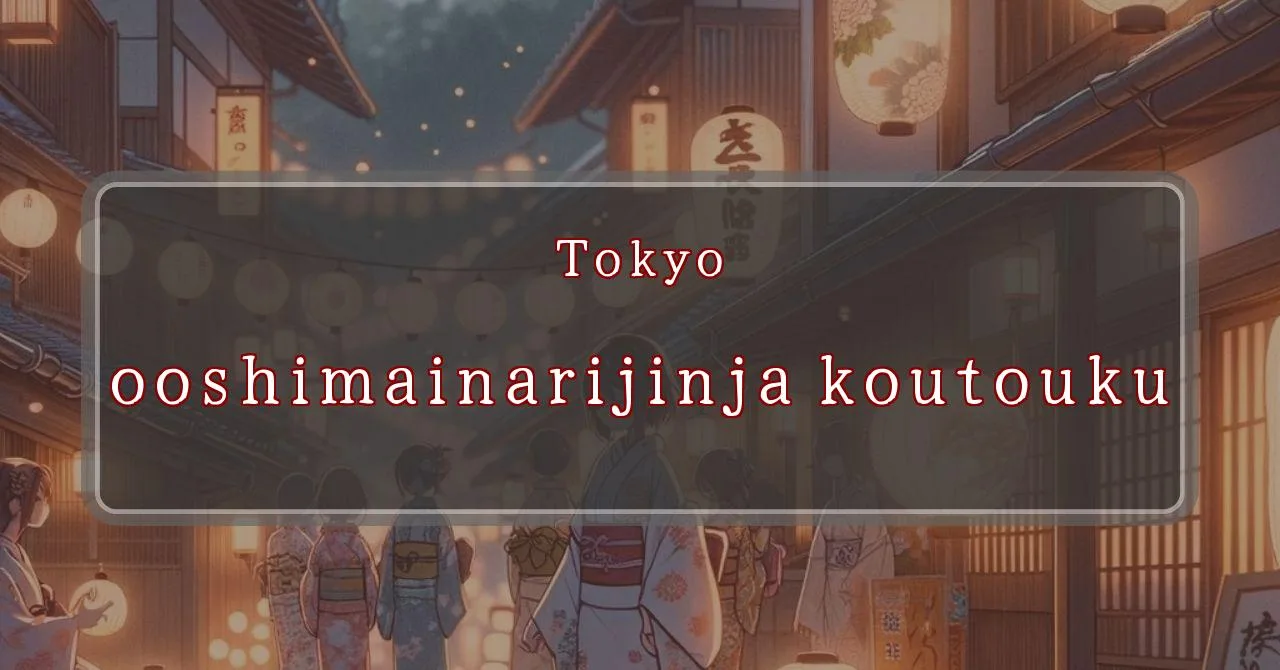Oshima Inari Shrine: A Journey Through History and Tradition
Basic Information
Oshima Inari Shrine is a Shinto shrine located in the Oshima district of Koto Ward, Tokyo, Japan. It is dedicated to the deities Ukanomitama-no-Kami and Kagutsuchi-no-Mikoto.
- Address: 5-39-26 Oshima, Koto-ku, Tokyo 136-0072
- Phone Number: 03-3684-4749
- Access: A 5-minute walk from Oshima Station on the Toei Shinjuku Line
- Festival Days: September 19th, 2024
Main Events and Attractions of the Festival
The Oshima Inari Shrine Festival is a vibrant and colorful event that attracts many visitors each year. The main events and attractions of the festival include:
Mikoshi Procession
The highlight of the festival is the mikoshi procession, where a portable shrine is carried through the streets of the Oshima district. The mikoshi is decorated with elaborate carvings and ornaments, and it is carried by a team of people. The procession is accompanied by music and dancing, and it is a lively and festive sight.
Kagura Performance
Kagura is a traditional Japanese dance and music performance that is often performed at Shinto shrines. During the Oshima Inari Shrine Festival, kagura is performed by a group of trained dancers and musicians. The performance tells stories from Japanese mythology, and it is a beautiful and moving experience.
Food Stalls
The festival also features a variety of food stalls, where visitors can enjoy a variety of Japanese dishes. Some of the most popular dishes include yakitori (grilled chicken skewers), takoyaki (octopus balls), and taiyaki (fish-shaped cakes filled with sweet red bean paste).
Games and Activities
There are also a variety of games and activities for children at the festival. These include traditional Japanese games such as ring toss and beanbag toss, as well as more modern games such as face painting and balloon animals.
Blessings and Deities
Oshima Inari Shrine is dedicated to the deities Ukanomitama-no-Kami and Kagutsuchi-no-Mikoto. Ukanomitama-no-Kami is the deity of food and agriculture, while Kagutsuchi-no-Mikoto is the deity of fire. Visitors to the shrine pray for good harvests, prosperity, and protection from fire.
Origin and History
The origins of Oshima Inari Shrine are unclear, but it is believed to have been founded in the early 17th century. The shrine was originally located near the coast, but it was moved to its current location in 1873. The shrine was destroyed by fire in 1945, but it was rebuilt in 1967.
Tips and Notes for Visitors
The Oshima Inari Shrine Festival is a popular event that attracts many visitors each year. If you are planning to attend the festival, here are a few tips:
- Arrive early to get a good spot to view the mikoshi procession.
- Wear comfortable shoes, as you will be doing a lot of walking.
- Bring cash, as many of the food stalls and vendors do not accept credit cards.
- Be respectful of the shrine and its customs.
Parking Information
There is no parking lot at Oshima Inari Shrine. However, there are several public parking lots nearby. The closest parking lot is located at the Oshima Civic Center, which is a 5-minute walk from the shrine.
Popular Stalls and Food Carts in Recent Years
| Type of Stall | Description |
|---|---|
| Takoyaki | A staple at Japanese festivals. Characterized by a crispy outside and a creamy inside. |
| Jaga Butter | A simple yet popular snack of hot potatoes lavishly topped with melted butter. |
| Baby Castella | Small castella cakes, sweet and fluffy treats enjoyed by children and adults alike. |
| Grilled Ayu with Salt | Fresh ayu fish grilled whole with salt, a savory taste of Japanese summer. |
| Shaapin | A unique gourmet item influenced by foreign cuisine, with a chewy skin wrapping the filling. |
| Okonomiyaki | A Japanese grilled dish where you often choose your own ingredients for a personalized flavor. |
| Cotton Candy | A fluffy, sweet snack that’s extremely popular with children. |
| Chocolate Banana | A banana coated in chocolate, a fun and visually appealing dessert. |
| Kushiyaki | Various types of ingredients skewered and grilled, an easy-to-enjoy snack. |
| Yakisoba | Fried noodles mixed with a special sauce, a fast food favorite in Japan. |



